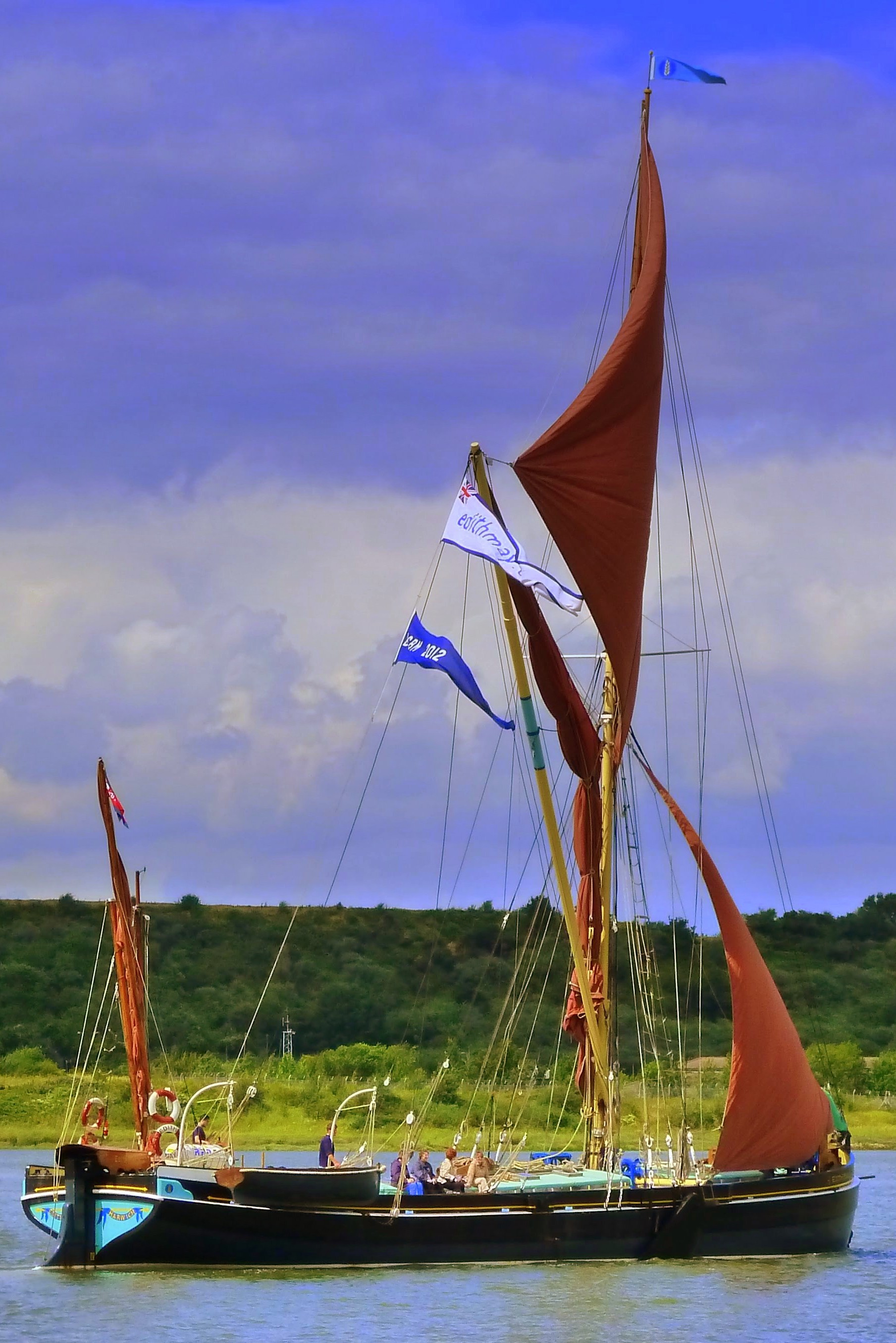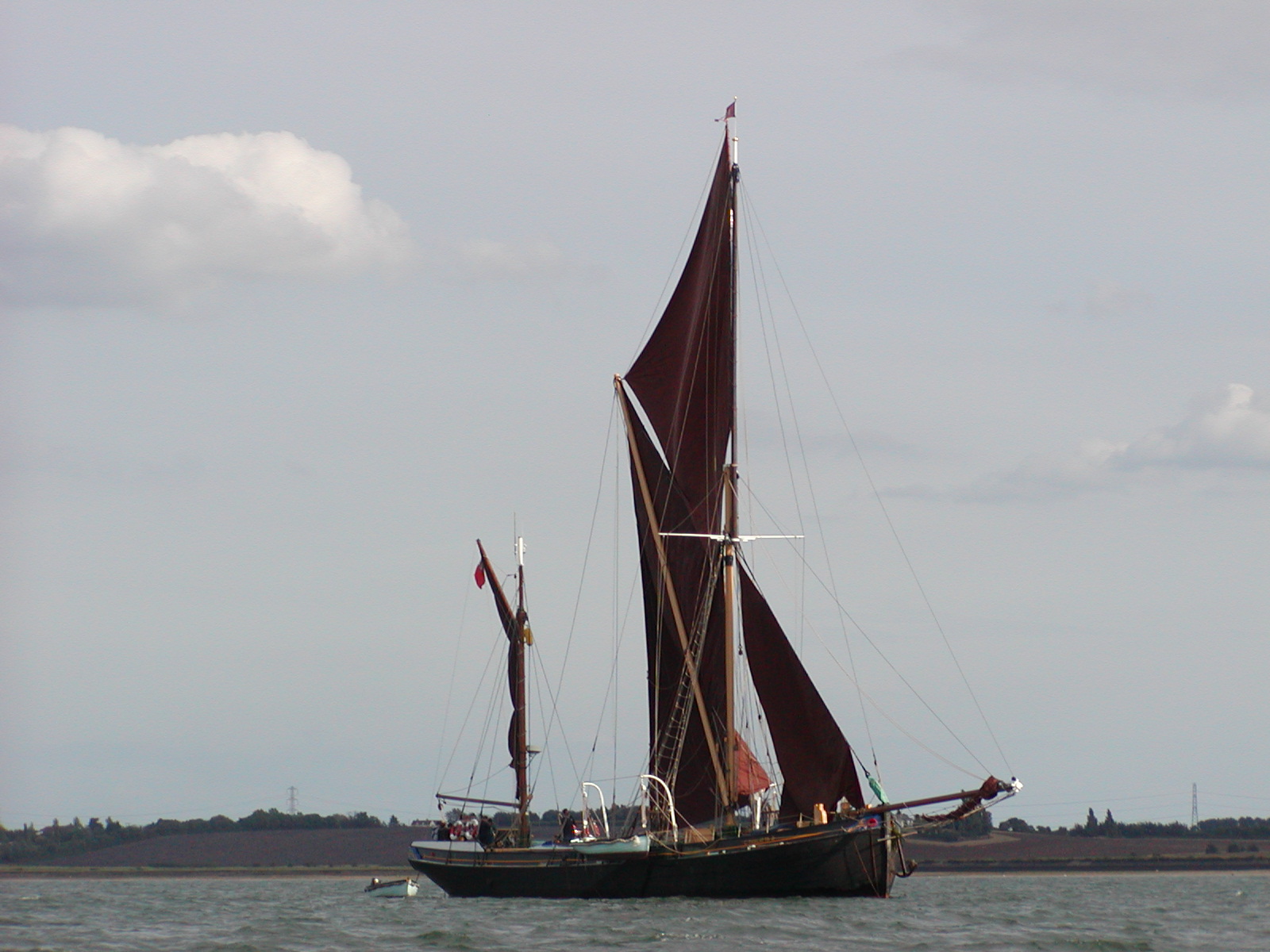|
SB Ena
The Ena is a wooden Thames sailing barge constructed in Harwich in 1906 that is resting on the flats adjacent to Stargate Marina in Hoo, Kent. She is a notable Dunkirk little ship reputed to have rescued 100 men. In 2002, ''Ena'' was the focus of an episode of the Channel 4 TV series ''Salvage Squad''. History The barge was built speculatively by W B McLearon at the Navy Yard slip, Harwich in 1906. R & W Paul Ltd, the grain and agricultural merchants, bought her in 1907 to use in the grain trade. This was the second barge they had bought from W B McLearon's Navy Yard, after the '' Thalatta''. They rigged her as a mulie in their own Dock End Shipyard. First World War service Ena served in the First World War, delivering supplies across the Channel to troops in France. Her shallow draught allowed her to operate in waters too shallow for the enemy U-boats. Dunkirk evacuation Thirteen Thames sailing barge A Thames sailing barge is a type of commercial sailing boat once com ... [...More Info...] [...Related Items...] OR: [Wikipedia] [Google] [Baidu] |
Salvage Squad
''Salvage Squad'' is a British television programme, in which the "Salvage Squad" faced the challenge of restoring an item of classic machinery. The task was usually against a tight deadline, such as a public unveiling at a vehicle rally. In addition to vintage cars, lorries, railway engines, boats and aircraft, the challenges included the resurrection of a Hampshire water mill and a set of fairground gallopers. The "Salvage Squad" comprised a presenter, either Lee Hurst (comedian), Lee Hurst or Suggs (singer), Suggs, and a team of restoration experts: Claire Barratt, Axel Cleghorn and Jerry Thurston. The team was also supplemented on each job by appropriate specialist craftsmen. The role of the presenter was mainly to narrate progress and to research the history of the item being restored, although they were sometimes roped into the restoration work itself. The programmes included archive footage of similar machines in action, explanations of the characteristic technologies used ... [...More Info...] [...Related Items...] OR: [Wikipedia] [Google] [Baidu] |
Thames Sailing Barge
A Thames sailing barge is a type of commercial sailing boat once common on the River Thames in London. The flat-bottomed barges with a shallow draught and leeboards, were perfectly adapted to the Thames Estuary, with its shallow waters and narrow tributary rivers. The larger barges were seaworthy vessels, and were the largest sailing vessel to be handled by just two men. The average size was about 120 tons and they carried of canvas sail in six working sails. The mainsail was loose-footed and set up with a sprit, and was brailed to the mast when not needed. It is sheeted to a horse, as is the foresail; they require no attention when tacking. The foresail is often held back by the mate to help the vessel come about more swiftly. The topsail was usually first sail on and last sail off, being fixed to the topmast by hoops. In the upper reaches of the rivers and constricted harbours it reached into the clear air, and when approaching a berth casting off the halliard would drop it ... [...More Info...] [...Related Items...] OR: [Wikipedia] [Google] [Baidu] |
Harwich
Harwich is a town in Essex, England, and one of the Haven ports on the North Sea coast. It is in the Tendring district. Nearby places include Felixstowe to the north-east, Ipswich to the north-west, Colchester to the south-west and Clacton-on-Sea to the south. It is the northernmost coastal town in Essex. Its position on the estuaries of the Stour and Orwell rivers, with its usefulness to mariners as the only safe anchorage between the Thames and the Humber, led to a long period of civil and military maritime significance. The town became a naval base in 1657 and was heavily fortified, with Harwich Redoubt, Beacon Hill Battery, and Bath Side Battery. Harwich is the likely launch point of the ''Mayflower'', which carried English Puritans to North America, and is the presumed birthplace of ''Mayflower'' captain Christopher Jones. Harwich today is contiguous with Dovercourt and the two, along with Parkeston, are often referred to collectively as ''Harwich''. History The tow ... [...More Info...] [...Related Items...] OR: [Wikipedia] [Google] [Baidu] |
Hoo St Werburgh
Hoo St Werburgh, commonly known as Hoo, is a large village and civil parish in the Medway district of Kent, England. It is one of several villages on the Hoo Peninsula to bear the name ''Hoo'', a Saxon word believed to mean "spur of land" or to refer to the "distinct heel-shape of the ridge of hills" through the settlement. Hoo features in Domesday Book, and had a population of 7,356 at the 2001 census, rising to 8,945 at the 2011 census. The civil parish includes Chattenden to the west. History St Werburgh was the daughter of King Wulfhere of Mercia, and niece of King Æthelred, his brother and successor. She was born between 640 and 650. The first church of Hoo may have been built in the reign of the 8th-century King Æthelbald of Mercia, though presumably a monastery existed nearby at an earlier time. This, together with land at Hoo All Hallows, is likely to have been placed under the rule of the leading Mercian monastery of Medeshamstede, now known as Peterborough. ... [...More Info...] [...Related Items...] OR: [Wikipedia] [Google] [Baidu] |
Little Ships Of Dunkirk
The Little Ships of Dunkirk were about 850 private boats that sailed from Ramsgate in England to Dunkirk in northern France between 26 May and 4 June 1940 as part of Operation Dynamo, helping to rescue more than 336,000 British, French, and other Allied soldiers who were trapped on the beaches at Dunkirk during the Second World War. Overview The situation of the troops, who had been cut off from their advance into France by a pincer movement from the German army, was regarded by the British prime minister Winston Churchill as the greatest military defeat for centuries; it appeared likely to cost Britain the war, as the majority of the British Expeditionary Force was trapped, leaving the country vulnerable to invasion by Germany.Birkett, Peter"Once more unto the beach for ships that saved an army" ''The Independent'', 3 June 2000."History" The Association of Dunk ... [...More Info...] [...Related Items...] OR: [Wikipedia] [Google] [Baidu] |
Channel 4
Channel 4 is a British free-to-air public broadcast television network operated by the state-owned enterprise, state-owned Channel Four Television Corporation. It began its transmission on 2 November 1982 and was established to provide a fourth television service in the United Kingdom. At the time, the only other channels were the television licence, licence-funded BBC One and BBC Two, and a single commercial broadcasting network ITV (TV network), ITV. The network's headquarters are based in London and Leeds, with creative hubs in Glasgow and Bristol. It is publicly owned and advertising-funded; originally a subsidiary of the Independent Broadcasting Authority (IBA), the station is now owned and operated by Channel Four Television Corporation, a public corporation of the Department for Digital, Culture, Media and Sport, which was established in 1990 and came into operation in 1993. Until 2010, Channel 4 did not broadcast in Wales, but many of its programmes were re-broadcast ... [...More Info...] [...Related Items...] OR: [Wikipedia] [Google] [Baidu] |
Grain Trade
The grain trade refers to the local and international trade in cereals and other food grains such as wheat, barley, maize, and rice. Grain is an important trade item because it is easily stored and transported with limited spoilage, unlike other agricultural products. Healthy grain supply and trade is important to many societies, providing a caloric base for most food systems as well as important role in animal feed for animal agriculture. The grain trade is as old as agricultural settlement, identified in many of the early cultures that adopted sedentary farming. Major societal changes have been directly connected to the grain trade, such as the fall of the Roman Empire. From the early modern period onward, grain trade has been an important part of colonial expansion and international power dynamics. The geopolitical dominance of countries like Australia, the United States, Canada and the Soviet Union during the 20th century was connected with their status as grain surplus c ... [...More Info...] [...Related Items...] OR: [Wikipedia] [Google] [Baidu] |
Thalatta (Thames Barge)
''Thalatta'' is a Thames sailing barge, built in Harwich, Essex, in 1906 and rebuilt in St Osyth in 2012. She is long and across the widest part of the deck. Like all Thames barges, she is flat-bottomed and has leeboards instead of a keel. She spent some of her life ketch-rigged and some of it spritsail-rigged. She is now permanently spritsail rigged, and has a mainmast and topmast that, together, are about high, and a mizzen mast. ''Thalatta'' has had two periods with an auxiliary engine and two without. She carried cargo for sixty years and was then converted for use as a sail training ship in 1966. She was completely rebuilt between 2006 and 2012 at St Osyth with assistance from lottery funds. History ''Thalatta'' was built by McLearon's shipyard in Harwich. She was bought from McLearon's by Fred Horlock of Mistley, who gave her a spritsail rig suitable for sailing in the smooth waters of the Thames estuary. She was registered on 6 February 1906 and her first skipper was ... [...More Info...] [...Related Items...] OR: [Wikipedia] [Google] [Baidu] |
Glossary Of Nautical Terms (M-Z)
__NOTOC__ M N O P Q R ... [...More Info...] [...Related Items...] OR: [Wikipedia] [Google] [Baidu] |
Will (Thames Barge)
''Will'' is a Thames sailing barge, built in Great Yarmouth by Fellows & Co in 1925. She is long, across and deep. ''Will Everard'', as she was originally known, was commissioned as one of four steel barges; the largest ever built. She is a ''mulie'', with a spritsail rigged mainmast, a topmast and a gaff-rigged mizzen. She has a flat bottom with leeboards as is customary for Thames sailing barges. As one of the last sailing cargo vessels to operate in UK waters she left trade in 1966. After a few years lying derelict, she was refitted and eventually entered into the service of P&O (Peninsular and Oriental Steam Navigation Company) where she was used as a floating board room until 1999. This role in corporate hospitality continued and she now is fully engaged in private charter work. She currently operates out of the Pool of London from a base at Hermitage Community Moorings, Reeds Wharf and St Katherine Docks for cruises through London, the east coast and beyond. Early life ... [...More Info...] [...Related Items...] OR: [Wikipedia] [Google] [Baidu] |
Thames Sailing Barges
The River Thames ( ), known alternatively in parts as the River Isis, is a river that flows through southern England including London. At , it is the longest river entirely in England and the second-longest in the United Kingdom, after the River Severn. The river rises at Thames Head in Gloucestershire, and flows into the North Sea near Tilbury, Essex and Gravesend, Kent, via the Thames Estuary. From the west it flows through Oxford (where it is sometimes called the Isis), Reading, Henley-on-Thames and Windsor. The Thames also drains the whole of Greater London. In August 2022, the source of the river moved five miles to beyond Somerford Keynes due to the heatwave in July 2022. The lower reaches of the river are called the Tideway, derived from its long tidal reach up to Teddington Lock. Its tidal section includes most of its London stretch and has a rise and fall of . From Oxford to the Estuary the Thames drops by 55 metres. Running through some of the drier parts of ... [...More Info...] [...Related Items...] OR: [Wikipedia] [Google] [Baidu] |








